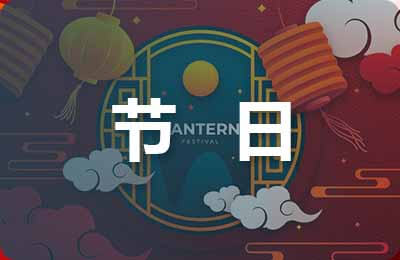对傣族关门节和开门节节日文化的理解和翻译
时间:2022-09-12 09:52:21

[摘要]傣族文化具其独特的文化内涵,随着旅游产业化的发展,引起了广大旅游者的兴趣。本文主要介绍了云南傣族关门节和开门节节日文化的丰富内涵,并对相关文献加以翻译,以期促进云南省民族旅游文化的发展。
[关键词]傣族;关门节;开门节
[中图分类号]K892 [文献标识码]A [文章编号]1005-3115(2011)02-0058-02
一、对关门节和开门节宗教文化的理解
关门节和开门节是信仰小乘佛教的傣族、布朗族、阿昌族、德昂族等少数民族的宗教节日。傣族的关门节和开门节典型、更有代表性,具有浓郁的宗教色彩。关门节傣语称“毫瓦萨”,意为进入传授佛法的时期,定于傣历九月十五日(农历六月中旬),历时三个月的传授佛法结束的那一天(即傣历十二月二十五日)便是开门节。开门节傣语称“奥瓦萨”,意为走出传授佛法时期。
一般认为,关门节和开门节源于古代印度佛教雨季安居的习惯,三个月的关门被视为信众的安居戒斋期。关门节那天,傣家村寨充满了节日的气氛。一大早,家家户户都忙着做彩色糯米饭和糕点,备办丰宴酒席。
二、 对开门节和关门节民族文化的理解
节日是全世界不同民族文化中的一个重要组成部分,按萨摩维尔的说法,文化是千百年来民族群体世世代代积累起来的知识、经验、信念、价值、活动、观点、理解、等级、宗教、节令、责任、关系、自然观、艺术等的总和,自然也包括历史、地理、政治制度、人物、文学艺术、服饰、饮食、习俗、礼仪、器具、建筑等。
傣族在中国分布虽然较少,主要集中在西双版纳州、德宏州,红河州及宁耳地区也有分布。傣族的节日文化对旅游产业的发展影响很大,主要节日有泼水节、送龙节、开门节、关门节等。阿昌族、布朗族也过泼水节和关门节。
三、对关门节和开门节节日文化的理解
傣族有这样的说法:每年傣历九月时,佛就前往西天与其母讲经,三个月才能重返人间。有一次,正当佛到西天讲经之时,佛徒数千人到乡下去传教,踏坏了百姓的庄稼,耽误他们的生产,百姓怨声载道,对佛徒十分不满。佛得知此事后,内心感到不安。从此以后,每遇佛到西天讲经时,便把佛徒都集中起来,规定在这三个月内不许到任何地方去,只能忏悔,以赎前罪。故人们称之为“关门节”。
关门节后,也就进入农事繁忙季节,人们为了集中精力从事生产劳动,定下许多戒规,直到三个月后,即开门节时,人们才恢复关门节前的一切正常活动。事实上关门节和开门节属农事活动节日,两个节日的相距时间较长。
四、 对关门节和开门节节日的翻译
关门节傣语叫“豪瓦萨”,是傣族等民族的传统节日,时间在傣历九月十五日(农历六月中)。节日来源于古印度佛教雨季安居的习惯,类似中原佛教的“结夏”。从关门节这天开始到开门节结束的三个月时间,为小乘佛教的安居斋戒期。这段时间,憎侣去佛寺净居修学,接收供养,禁止外出巡游。傣族多信佛教,民间信徒也常去佛寺静坐参佛,听佛爷讲经传法,每隔一周用食物、鲜花、腊条、银币或纸币敬佛一次。从关门节开始,傣家人关上爱情和婚姻之门,全力投人生产劳动,准备用辛勤的汗水去换取全年主要农作物的丰收。
此段可翻译为:
The Close-Door Festival,also called “Haowasha” in Dai language,is one of the traditional festivals for the Dai ethnic nationality. It takes place on September 15th of the Dai calendar (the second ten days in June of lunar year). The festival is originated from the nestle habit in the raining season in ancient Indian Buddhism similar to “summer rest” in China Buddhism. The festival may last for three months starting from the Close-Door Festival to the Open-Door Festival. It is the nestling fast period for the Hinayana Buddhism. During this period, the Buddhist monks are not allowed to go outing cruise but remain at the temples residing,studying and receiving fostering. Since many Dai ethnic minority people believe Buddhism,the civil followers also often go to the Buddhist temples to receive a silent sitting-in,visit the Buddha and listen to the teaching of the Buddhist lords. Every the other week they may respect the Buddha with food,fresh flowers,candles,silver papers or some paper money. Starting from the Close-Door Festival, the Dai families may close their “doors” from doing any love affairs and marriages but dedicate in their labor work, prepare to use all their strength and industrious sweat for a bumper harvest for the main farm crops of the whole year.
在关门节的三个月期间,民众到佛寺里听高僧讲经是一项主要活动。高僧讲授的内容少不了成佛者的故事,并以此来教化众生立志成佛。从关门节至开门节的三个月期间,傣家人不举行婚礼,不建盖新房,不出远门,要集中精力从事生产,定期到佛寺拜佛、赕佛,虔诚信佛的长者,自觉戒斋,穿白衣服,包白布头巾,有的还到寺内住宿,每隔七天举行一次拜佛活动。届时,信众们带上食物、蜡条供祭佛祖,聆听寺内高僧颂经,讲解教规、戒律、佛经故事。还要举行一次称为“赕坦”(献经书)的重大活动。三个月的关门节日期届满,即傣历十二月十五日,便举行开门节庆祝活动。信众们像参加关门节庆祝活动一样,带上纸花、蜡条、花树、食物、钱币来到佛寺,举行隆重的赕佛和颂经活动。
此段可翻译为:
During the three-month-festival period,one of the very important activities is for people to go to the Buddhist temple listening to the honored monk masters teaching the Buddhist scripture. The content of the renowned monk master’s talk never lacks of the Buddha stories in order to courage the myriad living beings to become Buddha with their resolutions. Furthermore, during the three-month-festival period, people are not allowed to hold any wedding ceremony, neither constructing a building of a new house nor traveling outside, but concentrating in their production, going to the Buddhist temple to worship and donating the Buddha faithfully. The elders who devoted in believing in Buddhism should quit fast, wear their white clothes,and wrap plain white turbans. Some of them may also go to the temple for accommodation. The Buddha-worshipping activities are held once every seven days. By the time the believers sacrifice some food and wax to worship the ancestry Buddha,and listen to the senior monks chanting Buddhist scripture and explaining the religious doctrines and the stories of the Buddhist scripture. Still an important activity called “donation” (dedication of classics) is also held. When the three-month-period of the Closed-Door Festival goes to the end on December 15th of Dai calendar,the Open-Door activities are celebrated accordingly. Just like what they celebrated in the Closed-Door Festival,the believers take paper flowers,candles,sacrificed food and paper money to the Buddhist temples for holding the solemn and impressive activities of donation and chanting Buddhist scripture.
开门节傣语叫“奥瓦萨”,是傣族等民族的传统节日,时间在傣历十二月十五日(约在农历九月中)。 开门节象征着三个月以来的雨季已经结束,表示解除关门节以来男女间的婚忌,即日起,男女青年可以开始自由恋爱或举行婚礼。节日这天,男女青年身着盛装去佛寺拜佛,以食物、鲜花、腊条、钱币敬献。祭献完毕,举行盛大的文娱集会,庆祝从关门节以来的安居斋戒结束。主要内容有燃放火花和高升、点孔明灯、唱歌跳舞。青年们还将举着画有着各种鸟、兽、鱼、虫等形状的灯笼环游村寨。这时,正逢稻谷收割完毕,故也是庆祝丰收的节日。
此段可翻译为:
The Dai Open-Door Festival,a traditional festival for the Dai nationality,also called “Aowasha” in Dai language, takes place on December 15th in the Dai calendar (the second ten days in lunar September). The Open-Door Festival symbolizes the end of the three month raining season,and the end of the three-month forbidden days for love affairs and marriages since the Close-Door Festival. From the Open-Door festival the young men and women can start their love affairs or hold a wedding. During the Festival, the young men and the young women dressed in their beautiful clothes go to the Buddhist temples to pay respects to the Buddha,and dedicate the Buddha with some sacrificial food,fresh flowers,candles,silver papers and paper money. After the sacrificial rites are done, the grand performances are held for celebration the end of the nestling fast since the Close-Door Festival. The main contents are displaying firecrackers,sending the Kongming lanterns, singing and dancing. The youth will also dance around the villages holding lanterns formed in various shapes,such as birds,animals,fish and insects etc. Bumper harvest is also celebrated since it is just the season for rice harvest.
五、 结语
傣族是一个历史悠久的民族,傣族是一个进步的民族,崇尚文明礼貌,民族性格温和。关门节和开门节是傣族的传统节日,具有典型的代表性和浓郁的宗教色彩。只有充分理解了这两个节日的文化内涵,才能准确翻译相关文献。